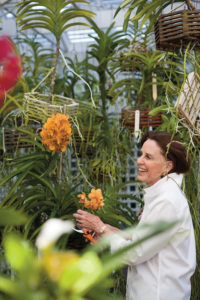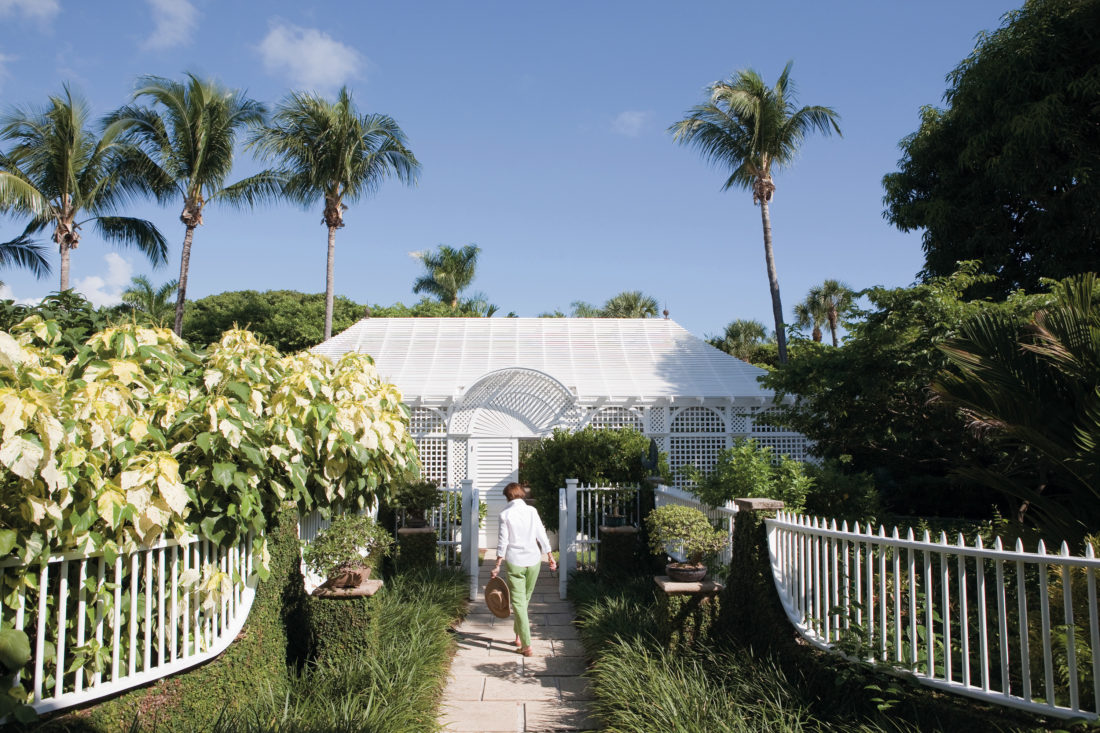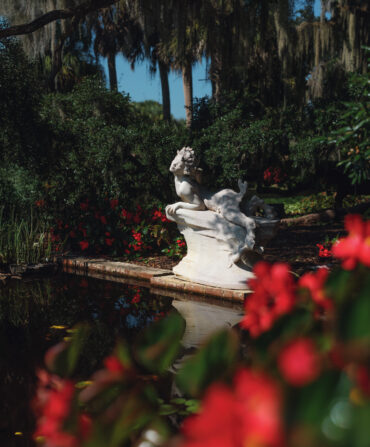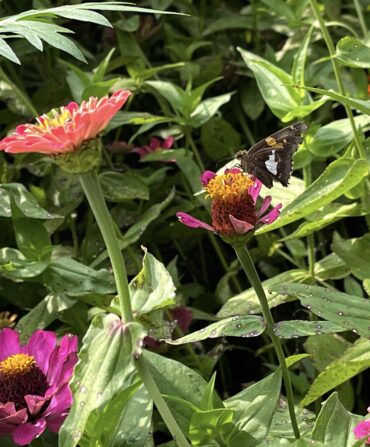Kit Pannill has a way with orchids. she fell in love with her first cattleya forty years ago in Tampa, Florida, and now coaxes two hundred cattleya and vanda varieties to bloom during the winter at her home in Palm Beach.
A Garden Club of America horticultural judge, Pannill is a hands-on gardener with a formidable reputation for growing spectacular orchids. The American Orchid Society honored her with an eponymous orchid, Vanda Kit Pannill, from which she cuts its offspring “kikis” for friends to propagate. This and many of her other gardening endeavors happen in her slat house.

Photo: Amy Mikler
Pannill clipping blooms.
The idea for the structure sprouted when Pannill got the chance to acquire and expand into part of a neighboring garden. Husband Bill Pannill, aka Mr. Daffodil, who has “grown, shown, and hybridized daffodils for sixty years,” was all for her horticultural expansion; Kit’s slatted lean-to off the kitchen had been jammed with orchids for years. “I was ready to put up a Quonset hut like the shade houses commercial growers in Florida use,” she says, “but my friend Leta Foster is an interior decorator, and she said, ‘Way too ugly! Think Brighton Pavilion with trellis work.’” The two enlisted local architect Jacqueline Albarran, who had plenty of experience designing treillage in Palm Beach.
Painted sugar white and framed with an alternating pattern of column-and-panel trellises, the 20-by-40-foot enclosure culminates in a slat roof resting on curved mahogany beams. The trellis work is utilitarian. It mimics slat houses in the tropics made of allover lath for sheltering tender plants from direct sun and creates the ideal environment for temperamental cattleyas and vandas wanting plenty of air circulation and indirect light. Reinforced with steel cabling, Kit’s version has proved impervious to three hurricanes.
Photo: Amy Mikler
A Vanda Fuchs Delight.
1 of 4
Photo: Amy Mikler
An Ascocenda Crownfox Delight.
2 of 4
Photo: Amy Mikler
The root systems of multiple vandas.
3 of 4
Photo: Amy Mikler
Multiple orchids.
4 of 4
“When my orchids bloom, I take them from tables where they’re grouped according to watering requirements and put them on display, to see when I walk in,” she says. “I like the drama of their colors with my bonsai, euphorbias, and agaves.” She also brings them into the house to brighten rooms, “but for no more than four to five days because they don’t like the dark.”
In the mornings when she arrives to sunlight and birdsong filtering through the slatted roof and trellis framework, Pannill relishes the best part of having an orchid house: walking in to see what’s blooming. That’s when she glories in the emerging jewel-hued cattleya flowers, “big enough for an old-fashioned Easter corsage,” and trains a fan-blown mist on the luscious roots of vandas cascading in triple tiers from hooks in the ceiling. Then it’s on to tending the rest of the day’s blooms.
For more information about architect Jacqueline Albarran, call 561-655-7676.












